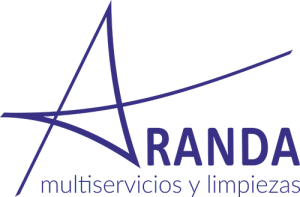Bodybuilding is an intense physical pursuit that demands not just rigorous training but also effective recovery strategies. The focus on muscle hypertrophy and strength development often leads to the need for optimal recovery methods. One of the more controversial yet widely discussed aids in this realm are anabolic steroids. Understanding how these substances impact muscle recovery can help bodybuilders make informed decisions about their use and effectiveness.
The Science Behind Muscle Recovery
Muscle recovery is a physiological process involving repair and regeneration of muscle fibers after strenuous exercise. When muscles undergo stress from weightlifting, microscopic tears occur in the muscle tissues. Recovery involves several critical processes:
1. **Inflammation Reduction**: Inflammation is the body’s natural response to trauma and can result in pain and swelling, which hinders subsequent workouts.
2. **Protein Synthesis**: This is the process by which cells build proteins necessary for repairing and growing muscle tissue.
3. **Glycogen Replenishment**: After intense workouts, glycogen stores in muscles need to be replenished to restore energy levels.
4. **Hormonal Balance**: Hormones such as cortisol and testosterone play significant roles in muscle recovery and growth.
How Steroids Facilitate Recovery
Anabolic steroids mimic the effects of testosterone in the body, influencing various biological processes that are essential for recovery. Here’s how they contribute:
– **Enhanced Protein Synthesis**: Steroids promote an increase in the rate of protein synthesis, allowing muscles to repair faster. With greater availability of amino acids, the body can rebuild damaged tissues more effectively.
– **Decreased Recovery Time**: By reducing the time it takes for muscles to heal post-exercise, steroids enable athletes to train more frequently without experiencing prolonged soreness or fatigue.
– **Increased Red Blood Cell Production**: Some steroids stimulate erythropoiesis (the production of red blood cells), improving oxygen delivery to muscles during recovery. This enhanced oxygenation supports metabolic processes that are crucial for repair and growth.
– **Reduction of Muscle Catabolism**: Anabolic steroids help to decrease muscle breakdown by inhibiting the action of glucocorticoids, hormones that can lead to muscle loss. This means that while bodybuilders are recovering, they are less likely to lose hard-earned muscle mass.
Steroids are often used in bodybuilding to accelerate muscle recovery and enhance overall recovery outcomes. These substances work by reducing inflammation and promoting protein synthesis, which helps repair muscle tissues more efficiently after intense workouts. As a result, bodybuilders can train more frequently and with greater intensity, leading to faster gains in muscle mass and strength. For more information on how steroids can aid in muscle recovery, visit https://buysteroidsgroup.net/.
Potential Risks and Considerations
While there are benefits to using steroids for muscle recovery, it’s important to consider the potential risks:
– **Health Risks**: Long-term steroid use can lead to serious health issues, such as liver damage, cardiovascular problems, hormonal imbalances, and psychological effects.
– **Legality and Ethics**: The use of anabolic steroids is banned in many competitive sports, and athletes may face severe penalties if caught using them. Understanding the legal implications is crucial.
– **Dependence**: There’s a risk of developing a dependence on steroids for performance enhancement, which can lead to unsustainable training practices.
– **Side Effects**: Users may experience side effects including acne, hair loss, mood swings, or aggressive behavior.
Best Practices for Recovery Without Steroids
For those who prefer to avoid anabolic steroids, there are plenty of ways to optimize recovery naturally:
1. **Proper Nutrition**: Focus on a balanced diet rich in protein, healthy fats, and complex carbohydrates to fuel recovery.
2. **Hydration**: Staying hydrated aids in nutrient transport and helps reduce muscle cramps and soreness.
3. **Sleep**: Quality sleep is vital for recovery; aim for at least 7-8 hours per night.
4. **Active Recovery**: Incorporate low-intensity exercises on rest days to promote blood flow to muscles.
5. **Supplements**: Natural supplements such as branched-chain amino acids (BCAAs), creatine, and omega-3 fatty acids can support recovery without the risks associated with steroids.
Conclusion
Anabolic steroids can significantly speed up muscle recovery and improve outcomes in bodybuilding through mechanisms such as enhanced protein synthesis, reduced inflammation, and increased red blood cell production. However, the potential health risks and ethical concerns surrounding their use cannot be overlooked. Bodybuilders should weigh the pros and cons carefully and consider alternative recovery strategies that promote long-term health and performance sustainability. Ultimately, informed choices will lead to better results, both in the gym and in overall well-being..

